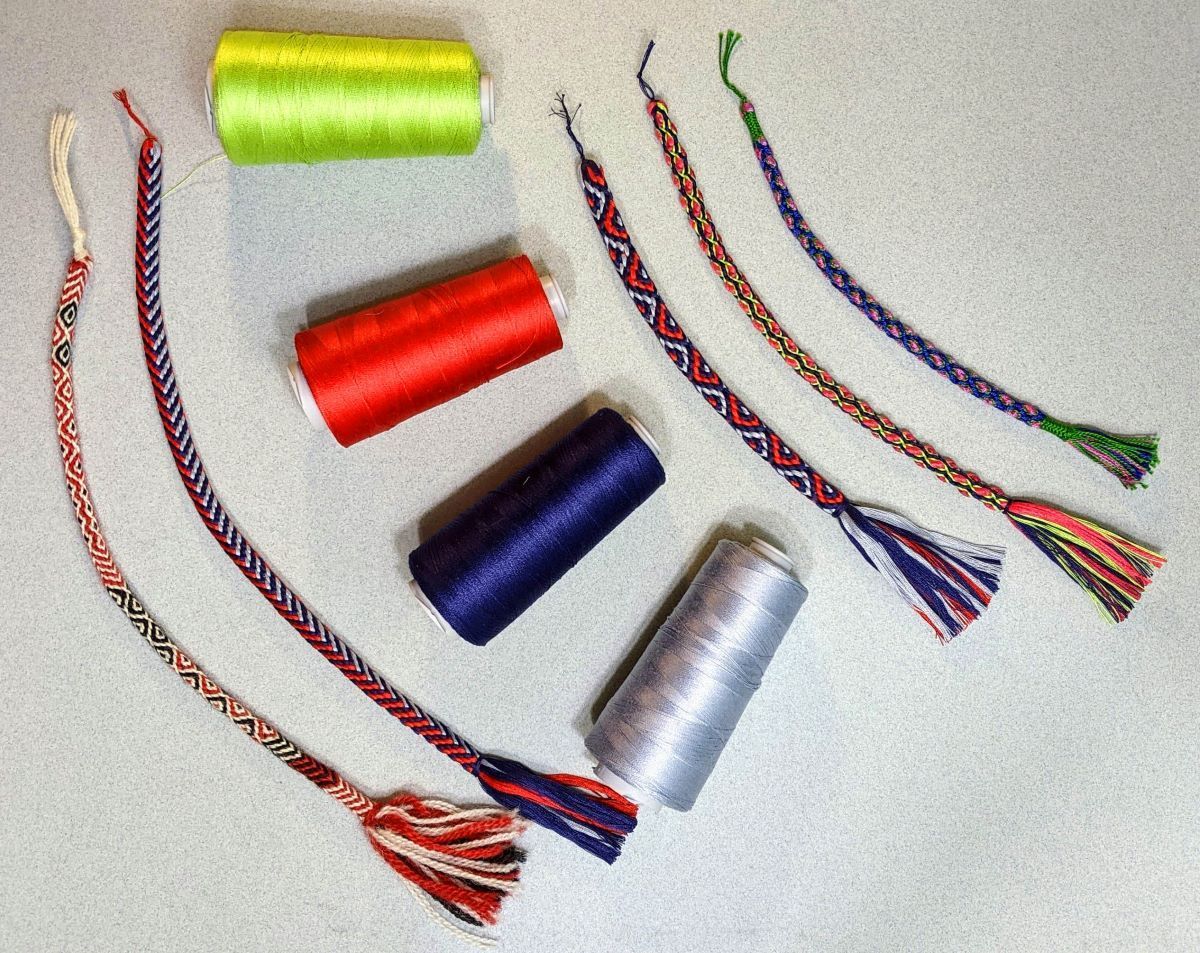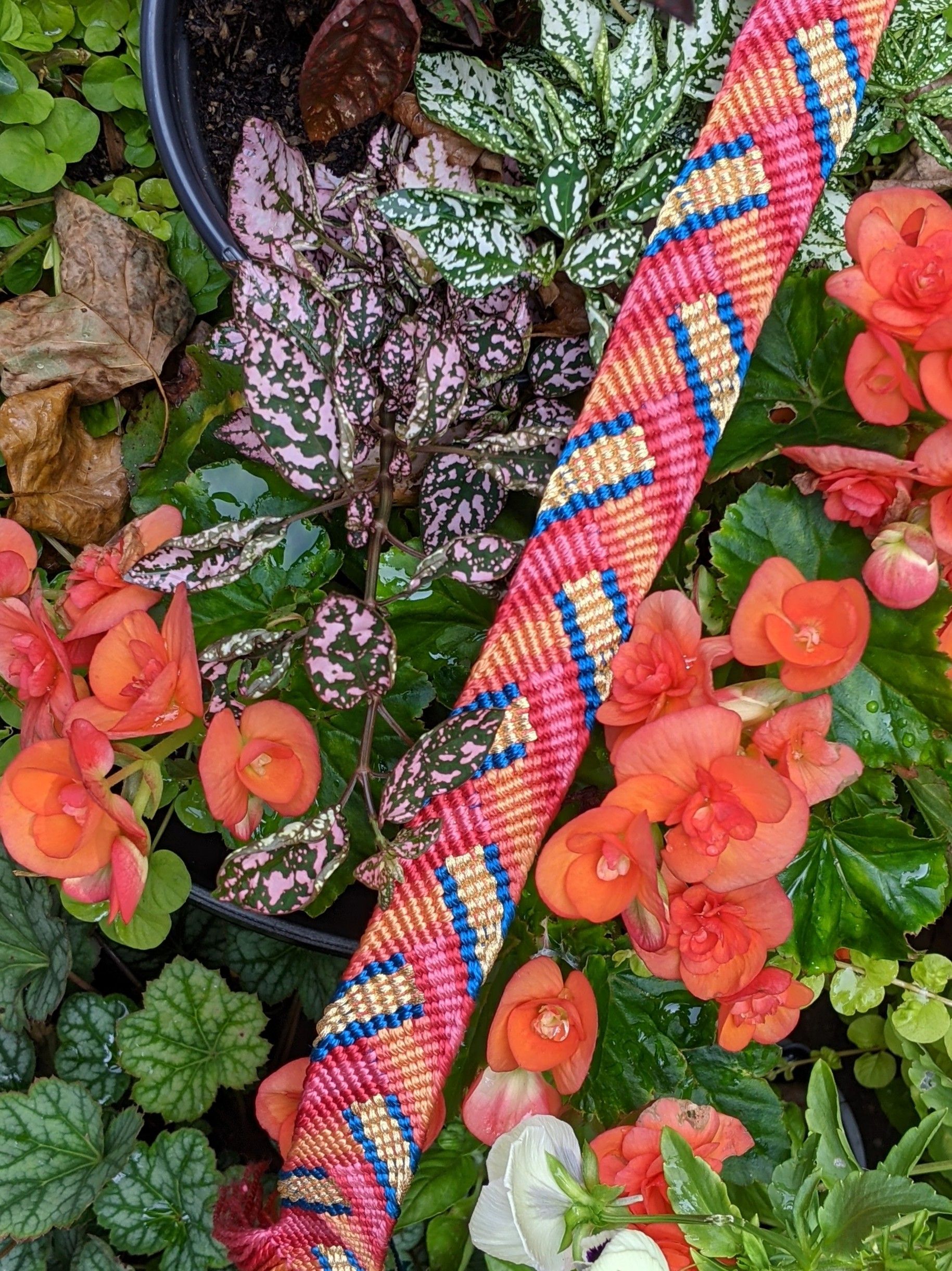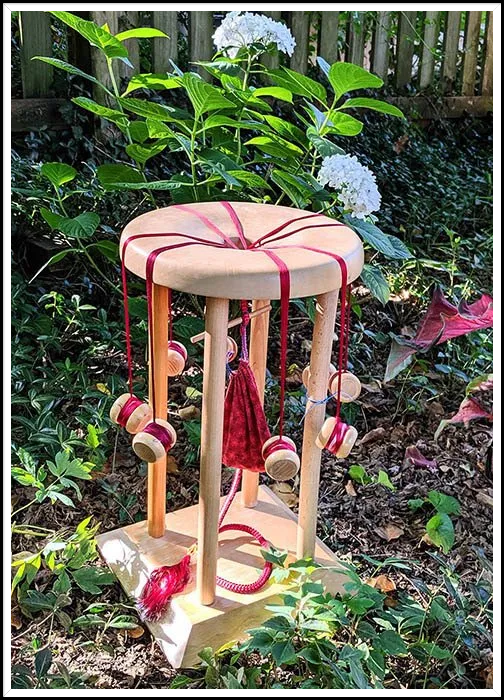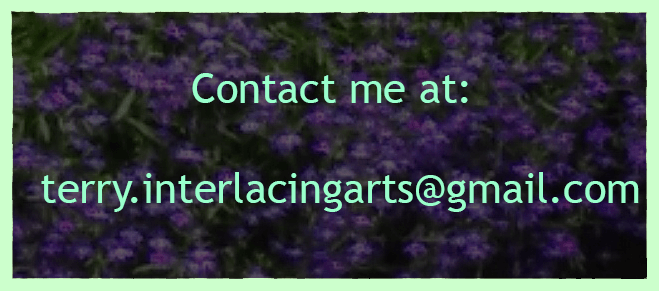Interlacing Arts - Blog Post 1
Welcome to Interlacing Arts!
My name is Terry Flynn and I am a textile artist, teacher, and writer. I have just finished making a video, Beginning Braiding on the Marudai! It is now available at Taproot Video.
You can read more about me in by clicking on the About tab. As you will see from the links at the top, I have great plans to add lots of content. For many years I have romanced about having a website, but life being what it is, there were things to do first including co-writing two books with Rodrick Owen on Andean sling braiding, and making and editing this video. Since I am a full-time art teacher during the school year, big projects make the most headway in the summer.
Interlacing Arts is the place where I plan to share images and information on some of my interests. Working with textiles is my passion! I am fascinated by the myriad ways they are constructed. I love seeing the inventive ways people have found to create pattern, texture, the functional, and the decorative. And color? Oh, color is a big deal to me. And so are the fibers we use: silk, cotton, wool, linen, copper wire, reed...
Beginning Braiding on the Marudai is a video class for beginners with no experience as well as for intermediate braiders who want to hone their skills. There are few kumihimo classes available in the US. Until recently, people relied on books and on Rodrick Owen's classic video Japanese Braiding (Marudai). When I started this project in 2018 there were a few resources scattered on the Internet, but nothing comprehensive.
Rodrick's video is packed with information but was designed to fit into a prescribed time frame in the days of VHS. I had a little more freedom. In the past several years, I have been co-teaching with Rodrick several times a year at Red Stone Glen Fiber Workshop. A number of students encouraged me to think about making a video so that they would have something to help them remember what we covered once they went home. So this video is based on what I teach beginning marudai braiders in a 2-3 day workshop.
My video doesn't replace Rodrick's you definitely want to see the master at work! What it does is to break the topic down a bit further with emphasis on what students have told me they most want to be able to review. Remember that as you learn this new skill of braiding it is helpful to look back every once in a while to review what is written in books and what you see in this video because you will understand it in a different context as your skills increase.
So, stay tuned! I have much to learn about designing and managing a website. As I tell my students, the ones in my art room at school, as well as my adult braiding students, learning should make your brain hurt just a little bit. Mine is certainly getting a workout!
All the best,
Terry
Interlacing Arts Blog



